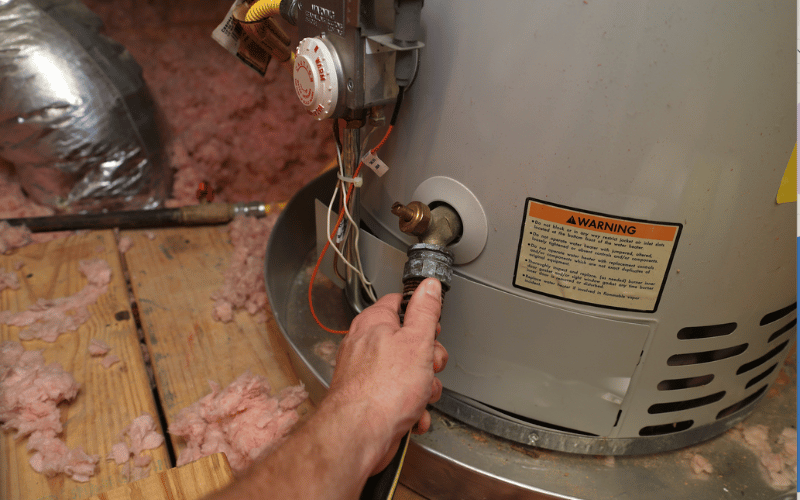Effective Techniques for Maintaining Your Home's Hot Water System
Effective Techniques for Maintaining Your Home's Hot Water System
Blog Article
How do you really feel in regards to Water Heater Maintenance Tips You Can't Afford to Forget?

Warm water is vital for daily convenience, whether it's for a revitalizing shower or washing meals. To ensure your warm water system runs effectively and lasts longer, normal upkeep is essential. This article provides sensible ideas and insights on just how to preserve your home's hot water system to stay clear of disturbances and costly fixings.
Intro
Maintaining your home's warm water system might appear complicated, however with a few basic steps, you can guarantee it operates efficiently for many years to come. This overview covers everything from recognizing your hot water system to do it yourself maintenance ideas and knowing when to call in specialist help.
Value of Maintaining Your Warm Water System
Regular maintenance not only expands the life expectancy of your hot water system yet additionally ensures it runs successfully. Disregarding maintenance can lead to decreased effectiveness, greater power expenses, and also premature failure of the system.
Signs Your Hot Water System Needs Upkeep
Knowing when your hot water system requires interest can protect against major concerns. Keep an eye out for indicators such as inconsistent water temperature, odd sounds from the heater, or rustic water.
Recognizing Your Hot Water System
Before diving right into maintenance tasks, it's helpful to understand the fundamental parts of your hot water system. Normally, this consists of the water heater itself, pipes, anode poles, and temperature level controls.
Monthly Maintenance Tasks
Routine regular monthly checks can help catch minor problems prior to they rise.
Purging the Hot Water Heater
Flushing your water heater eliminates debris build-up, improving efficiency and lengthening its life.
Monitoring and Replacing Anode Rods
Anode poles avoid rust inside the container. Examining and changing them when broken is important.
Examining and Changing Temperature Level Settings
Adjusting the temperature settings makes sure optimal efficiency and safety and security.
DIY Tips for Maintenance
You can do numerous upkeep jobs yourself to keep your hot water system in leading problem.
Looking for Leaks
On a regular basis evaluate pipes and connections for leaks, as these can lead to water damages and greater expenses.
Checking Pressure Alleviation Valves
Examining the stress safety valve guarantees it works properly and protects against excessive pressure accumulation.
Insulating Pipelines
Protecting hot water pipelines minimizes warm loss and can conserve energy.
When to Call an Expert
While DIY upkeep is advantageous, some issues require expert know-how.
Complicated Problems Requiring Professional Help
Examples consist of significant leaks, electric issues, or if your hot water heater is constantly underperforming.
Routine Professional Upkeep Advantages
Specialist upkeep can include detailed assessments, tune-ups, and guaranteeing conformity with security standards.
Verdict
Routine upkeep of your home's warm water system is vital for efficiency, durability, and cost financial savings. By following these pointers and knowing when to seek specialist assistance, you can ensure a trustworthy supply of hot water without unanticipated interruptions.
Water Heater Maintenance Tips
Test the TPR Valve
Shut off the power and the cold-water supply valve. Place a bucket under the pipe connected to the temperature-pressure-release (TPR) valve on the top or side of the tank. (This valve opens if the tank pressure gets too high.) Lift the valve’s tab to let some water out, then let go. If water keeps flowing, drain the tank partway, unscrew the old valve with a pipe wrench, and install a new one. Check the Anode Rod
Put a hose to the tank’s drain cock and let out a few gallons of water. Now fit a 1 1/16-inch socket onto the rod’s hex head on top of the heater (or under its top plate) and unscrew the rod. If it’s less than ½ inch thick or coated with calcium, buy a new one, wrap its threads with Teflon tape, put it back in the tank, and tighten securely. Use this segmented rod if headroom above the tank is limited. Drain the Tank and Wash Out Sediment
Drain the remaining water in the tank into the bucket, then stir up the sediment on the tank’s bottom by briefly opening the cold-water supply valve. Drain and repeat until clean water comes out of the hose. Close the drain cock, refill the tank, and turn its power back on. Adjust the Temperature
Find the temperature dial on the side of the tank and unscrew its cover. Adjust the dial to 120 degrees using a flathead screwdriver. For every 10 degrees the temperature is lowered, you can expect to save up to 5 percent in energy costs. Turn the water heater off or the thermostat down to its lowest setting if you plan to be away from home for more than three days. Insulate the Pipes
Buy some self-sticking 3/8-inch-thick foam pipe insulation that matches the pipes’ diameter. Slide the foam over the hot-and cold-water pipes as far as you can reach. Insulating the cold-water pipe prevents condensation in summer. Peel the tape and squeeze the insulation closed. If the pipe is 6 inches or less from the flue, cover it with 1-inch-thick unfaced fiberglass pipe wrap. https://www.thisoldhouse.com/plumbing/21016402/how-to-maintain-a-water-heater

As a devoted reader on Tips For Maintaining Your Hot Water Heater, I assumed sharing that editorial was a good idea. Sharing is nice. Helping others is fun. I thank you for your readership.
Booking Page Report this page